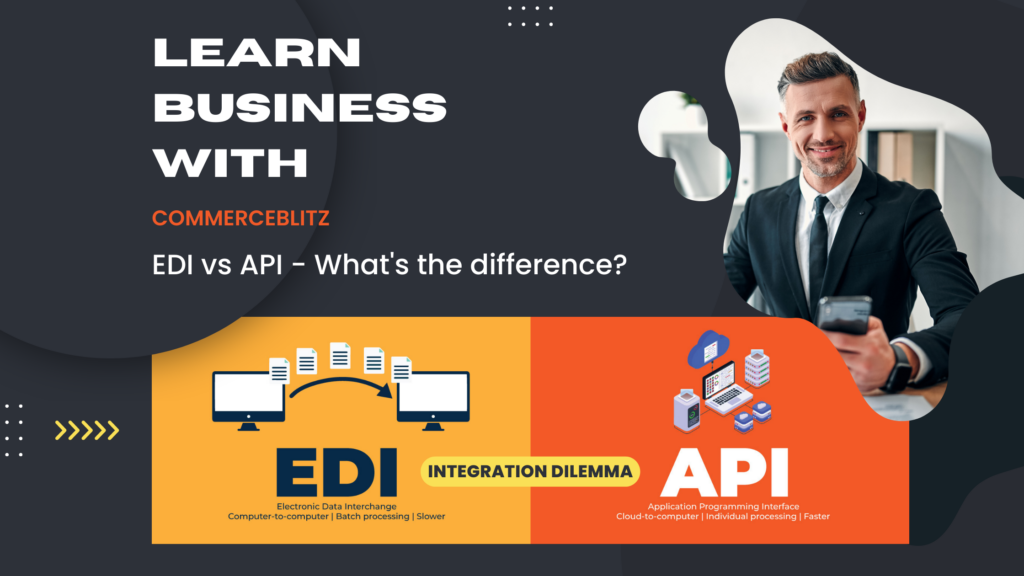EDI vs API: Difference, Similarities, and Benefits to CommerceBlitz Users
As we’re seeing with eCommerce lately, the businesses that can correctly adapt to their buyers’ needs are the ones that succeed – and the ones who are slow to listen get left behind. Today’s quick blog post will get just a bit technical, but if you’re a small or medium-sized eCommerce seller who cares less about the guts of software and more about the results, no worries: you’ll come out with practical knowledge that will give you a leg up in your operation. Today we’re examining the difference between EDI and API, two methods of data communication – and where CommerceBlitz OMNI fits into that split. (Spoiler: we didn’t have to choose.)

Let’s tackle the second one first: you’ve probably heard of API, or Application Programming Interface. To use a very unscientific definition, API is a language used between different platforms to communicate with one another. When you pay for something in a Shopify store by logging into your Paypal or Apple Pay account, Shopify is calling your login via API from that third-party service to establish your identity. Most small eCommerce services use API for fast, cloud-based processing of individual orders.
OK, now let’s tackle that lesser-known one. EDI, or Electronic Data Interchange, is another technical process that allows for a one-to-one communication between two entities concerning a particular transaction. It emerged from the need to digitize processes that were conventionally done on paper. Because it’s a one-to-one, not a one-to-many (like a cloud-based process), it’s slower. But EDI is still used by thousands of businesses worldwide – including some of the largest businesses in spaces like healthcare, shipping, and more. And, unlike API, EDI can handle batch transactions – so even though it’s slower, it can still communicate multiple things at a time.
You’re probably asking yourself: “if EDI is slower, why use it?” Sometimes we wonder ourselves. But the reality is that by the money, EDI still makes up the majority of transactions – up to 79%! This is because many of the biggest services like Amazon and Walmart still use EDI for a multitude of sales (many of them B2B, or business-to-business), every year.
At CommerceBitz, we recognize that EDI and API are both huge parts of our world – so we decided not to choose between the two. As of today, our omnichannel warehouse and inventory management platform, CommerceBlitz OMNI, now includes a translation engine that, just like any two languages, will help EDI and API talk to each other. You won’t notice the difference, except now your data will be compatible on both sides.
When you switch your business over to our platform, you’re getting the support of a team who lives and breathes this stuff. We’re here for you!